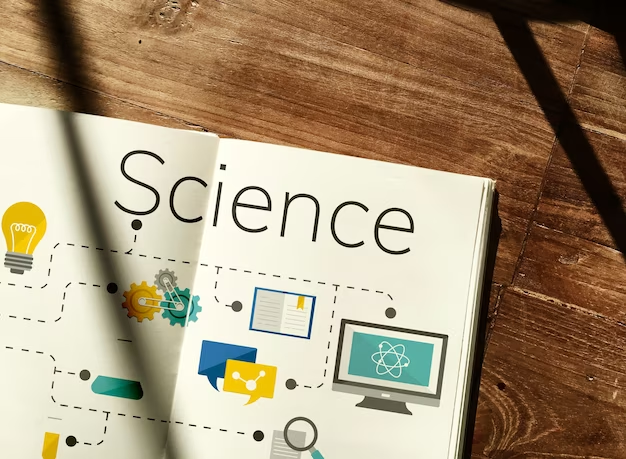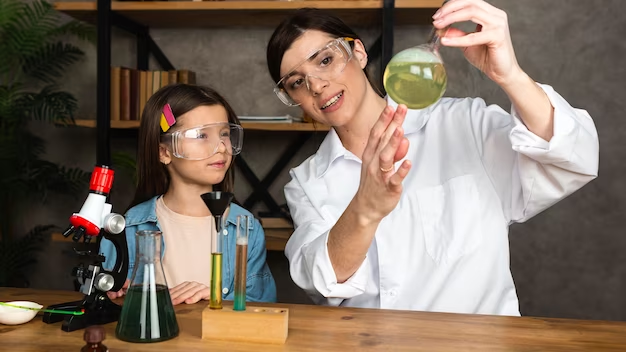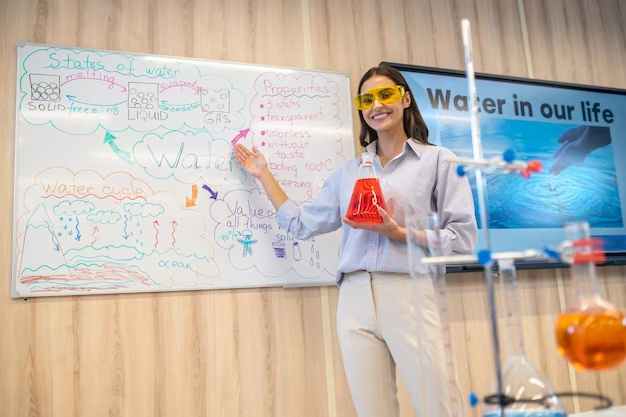
In the realm of science, where complex concepts and discoveries abound, storytelling emerges as a powerful tool to captivate, educate, and inspire. By weaving narratives into scientific communication, researchers and communicators can bridge the gap between technical knowledge and broader audiences.
The Art of Scientific Storytelling
The Power of Narrative
Storytelling has been an intrinsic part of human civilization since time immemorial. Our brains are wired to respond to stories, as they provide context, evoke emotions, and create lasting impressions. In the realm of science, storytelling serves as a gateway to make complex ideas accessible and relatable to the general public. By structuring scientific information into narratives, researchers can transform dry facts and figures into engaging tales that resonate with audiences of all backgrounds.
Elements of Effective Scientific Stories
To craft compelling scientific narratives, certain key elements should be considered:
Characters
Introducing relatable characters—whether scientists, researchers, or even scientific phenomena—can humanize scientific concepts. By creating personas that audiences can connect with, storytelling in science takes on a personal and relatable touch, fostering a deeper understanding and emotional connection.
Plot Development
Just like any captivating story, scientific narratives should have a well-structured plot. This involves establishing a clear beginning, introducing conflicts or challenges, and ultimately resolving them. Through this journey, audiences are taken on an intellectual and emotional adventure, making the scientific information more memorable.
Visual Imagery
Visual imagery plays a crucial role in scientific storytelling. By painting vivid pictures in the minds of audiences, whether through descriptive language or accompanying visuals, scientific narratives can evoke a sense of wonder and ignite curiosity. Well-crafted visuals such as illustrations, photographs, or infographics can enhance comprehension and engagement.
Benefits of Storytelling in Science
The fusion of storytelling and science yields numerous advantages:
Enhancing Accessibility
Complex scientific concepts often intimidate and distance non-expert audiences. However, by harnessing storytelling techniques, scientific information becomes more accessible and approachable. Narratives break down barriers, enabling broader segments of society to grasp and appreciate the wonders of science.
Increasing Engagement
Stories have an innate ability to capture attention and sustain interest. By incorporating storytelling in scientific communication, researchers can engage audiences on a deeper level. Engaged listeners are more likely to retain information, promoting scientific literacy and encouraging further exploration of scientific topics.
Fostering Emotional Connection
Facts and figures alone may fail to leave a lasting impression. However, when scientific information is presented through narratives, an emotional connection is forged. Emotions have the power to enhance memory retention and influence behavior, creating a more profound impact on individuals and society as a whole.

Storytelling in Scientific Communication
Science Journalism
Science journalism relies heavily on storytelling to communicate complex scientific findings to the general public. Journalists who specialize in science reporting harness the power of narratives to distill intricate research into digestible articles, news features, or documentaries. By employing storytelling techniques, science journalists bridge the gap between the scientific community and the public, fostering greater understanding and interest in scientific endeavors.
Science Education
Educators recognize the effectiveness of storytelling in science education. By integrating narratives into lesson plans and curriculum, teachers can ignite students’ curiosity and create memorable learning experiences. Storytelling allows students to grasp scientific concepts through context, connecting the dots between theory and real-world applications.
Public Engagement and Outreach
Public engagement plays a vital role in the dissemination of scientific knowledge. Scientists, institutions, and organizations employ storytelling as a means to captivate and inform diverse audiences. From interactive exhibits to science-themed performances, storytelling offers a dynamic and immersive experience, inviting individuals of all ages to explore the wonders of science.
Storytelling Strategies for Effective Science Communication
To effectively communicate scientific information using storytelling techniques, consider the following strategies:
- Crafting Compelling Introductions: Begin your narrative with a captivating hook that piques the curiosity of your audience. Engage them from the start by introducing an intriguing question, a fascinating anecdote, or a relatable scenario;
- Creating a Narrative Arc: Structure your story with a clear beginning, middle, and end. Establish the context, present the scientific concepts or discoveries, and conclude with a thought-provoking insight or call to action;
- Using Analogies and Metaphors: Analogies and metaphors can simplify complex scientific ideas by relating them to familiar concepts. By drawing parallels between abstract concepts and everyday experiences, you can enhance understanding and engagement;
- Incorporating Emotionally Resonant Elements: Connect with your audience on an emotional level by highlighting the human impact of scientific research. Share personal stories, anecdotes, or real-world examples that evoke empathy and make the science relatable;
- Visual Storytelling: Utilize visual aids such as charts, infographics, or illustrations to enhance your narrative. Visual elements can effectively convey complex information, making it more accessible and memorable.

Storytelling Techniques Across Different Scientific Disciplines
Storytelling finds its place in various scientific disciplines, contributing to their communication and advancement:
Physics
In the realm of physics, storytelling can unravel the mysteries of the universe. From explaining the fundamental principles of quantum mechanics to describing the mind-bending concepts of relativity, narratives can guide audiences through the awe-inspiring wonders of the cosmos.
Biology
Storytelling breathes life into the intricate web of biological systems. From exploring the diversity of ecosystems to delving into the mysteries of genetics, narratives can illuminate the interconnectedness of life on Earth, fostering a deeper appreciation for the delicate balance of nature.
Psychology
By integrating storytelling into psychology, researchers can delve into the human mind and behavior. Narratives can shed light on the complexities of the human experience, exploring topics such as cognitive processes, emotional well-being, and the impact of social interactions.
Environmental Sciences
Storytelling plays a vital role in raising awareness about environmental issues. By weaving narratives around climate change, biodiversity loss, or sustainability, scientists can inspire action and empower individuals to become stewards of the environment.
The Future of Storytelling in Science
Storytelling in science continues to evolve and expand its reach. With advancements in technology, new avenues for scientific storytelling emerge, such as:
Digital Platforms and Social Media
Digital platforms and social media provide unprecedented opportunities for scientific storytelling. Through engaging videos, podcasts, and interactive content, researchers can share their stories with a global audience, fostering scientific literacy and inspiring future generations.
Virtual and Augmented Reality
Virtual and augmented reality offer immersive experiences that transport audiences into the heart of scientific exploration. By leveraging these technologies, scientists can convey the intricacies of their work in an interactive and visually captivating manner.
Comparison of Storytelling Techniques and Their Impact
| Storytelling Technique | Impact on Science Communication |
|---|---|
| Personal Anecdotes | Creates emotional connection and relatability |
| Visual Storytelling | Enhances comprehension and engagement |
| Analogies and Metaphors | Simplifies complex concepts and aids understanding |
| Character-driven narratives | Humanizes scientific information and makes it relatable |
| Narrative Arc | Provides structure and engages the audience |
| Incorporating Real-world Examples | Demonstrates practical applications and relevance |
By employing a combination of these storytelling techniques, scientists and communicators can create impactful narratives that resonate with audiences and facilitate a deeper understanding of scientific concepts.
Expanding the Impact of Storytelling in Science
The Role of Storytelling in Science Policy
Storytelling plays a crucial role in shaping science policy and decision-making processes. By effectively conveying the societal relevance of scientific research through narratives, scientists can influence policymakers and stakeholders. Compelling stories that highlight the potential benefits, risks, and implications of scientific advancements can inform policy discussions, leading to evidence-based decision-making and the advancement of society as a whole.
Ethics and Responsibility in Scientific Storytelling
While storytelling in science holds immense power, it is essential to maintain ethical standards and responsibility in its application. Researchers and communicators must ensure accuracy, transparency, and integrity when crafting narratives. It is crucial to avoid sensationalism, misinformation, or oversimplification of scientific concepts. By upholding ethical storytelling practices, the credibility and trustworthiness of scientific communication can be preserved.
Storytelling in Citizen Science
Citizen science projects empower individuals to actively participate in scientific research. Storytelling becomes a valuable tool to engage citizen scientists, motivate their involvement, and communicate the impact of their contributions. By sharing stories of citizen science success, researchers can inspire broader public participation, democratize science, and strengthen the connection between scientific endeavors and the general public.
Cultural Perspectives in Science Storytelling
Science storytelling is not confined to a single cultural lens. Different cultures have their unique storytelling traditions and perspectives, which can be harnessed to enrich science communication. Embracing diverse cultural narratives in scientific storytelling allows for a broader range of perspectives, fostering inclusivity and encouraging a more comprehensive understanding of science across various communities.

Conclusion
Storytelling in science unlocks a world of possibilities, enabling scientists and communicators to captivate, educate, and inspire audiences like never before. By harnessing the power of narratives, science becomes more accessible, engaging, and relatable to individuals from all walks of life. Embrace the art of scientific storytelling and unlock the true potential of science communication.